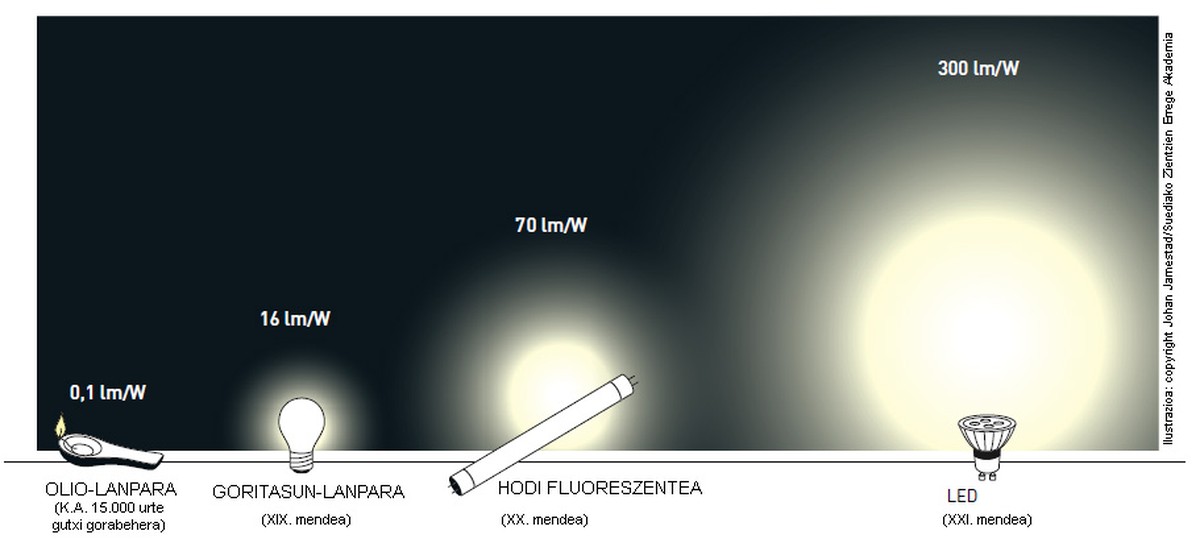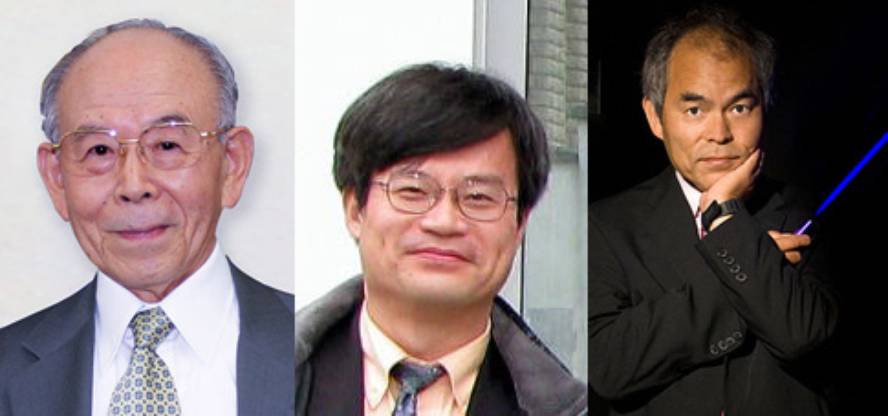Nobel Prize in Physics 2014 for inventing a light source based on LED blue light
This year's winners fully add to what Alfred Nobel wanted to achieve in the creation of the awards: reward inventions that have benefited most from humanity. And is that incandescent lamps XX. if they clarified the 21st century. LED century is the clearest. And specifically LED lamps that emit blue light. Because without blue light you cannot create white lamps.
Three decades passed from the creation of the first LED lights to the creation of blue LEDs. In the 1950s and 1960s several research groups managed to create LED lights of different wavelengths. As for visible light, by the late 1960s, green and red LEDs were manufactured by manufacturers around the world, using gallium phosphide (GaP) as the base material. However, with this material they did not get the energy emitted by the electrons out of the wavelength of the blue light. In fact, the forbidden energy range that electrons must exceed to generate blue light must be very high.
In short, the emission of light is based on the fact that semiconductor materials have a forbidden energy range between valence bands and conduction bands, in which electrons cannot exist. Electrons exceed this range thanks to external excitation and emit light by returning to the original energy level. In the case of blue light, it was very difficult for scientists to find, create and operate a material with that large margin.
Akasaki and Amano on the one hand and Nakamura on the other
From the beginning they saw that gallium nitride (GaN) could be a good candidate, and in the Philips research laboratory, for example, they took it into account in the late 1950s. But they had great difficulties in making this crystal. Many U.S. labs struggled in the 1960s, but the difficulty in creating this material seemed insurmountable. Isamu Akasaki began studying GaN in 1974 and in 1981 resumed his work with Hiroshi Amano. It was in 1986 that high quality GaN crystals and good optical properties were produced. Shuji Nakamura, on the other hand, created the right crystals of this material.
In a next step, the difficulties of creating the LED diode itself were overcome. On the one hand, they determined with which atom the GaN doped. Doping is called the addition of other impurities atoms to the original semiconductor material to modify its electrical characteristics. For example, Amano and Akasaki saw zinc atoms doped with more light emitting gallium nitride. On this path, the advancement of Akasaki and Nakamura research groups in the 1990s is considered a fundamental step: AlGaN and InGaN alloys were formed and doparated. They are considered essential because through them the structure of the blue LEDs is created.
Current LEDs are based on GaN, but they have improved a lot from the former, both in materials physics and in crystals generation, advanced structures, etc. This converts electrical energy into light with great efficiency. For example, incandescent lamps provide 16 lumens per watt they receive; 70 fluorescent tubes and white LEDs can reach more than 300.

Currently, in LED lamps, the emitted blue rays excite the phosphorus, thus turning the blue light into white. However, it seems that in the near future this technology can resort to the combination of LED in three colors. The combination of red, green and blue LEDs on one device allows for white light.
With 20% to 30% of total energy consumption in lighting, and LEDs based light sources consume up to ten times less energy, the use of blue LEDs will enable significant energy savings for the benefit of humanity.






